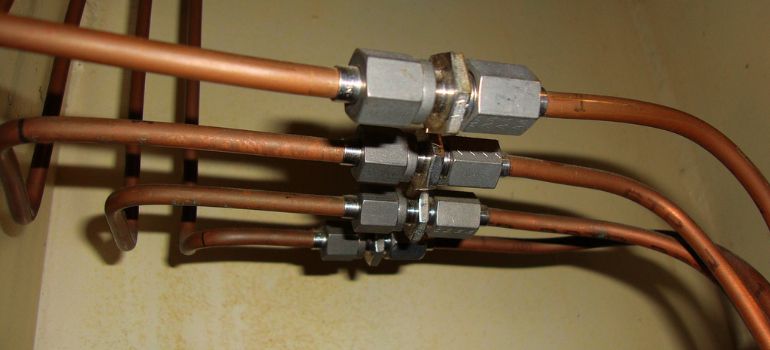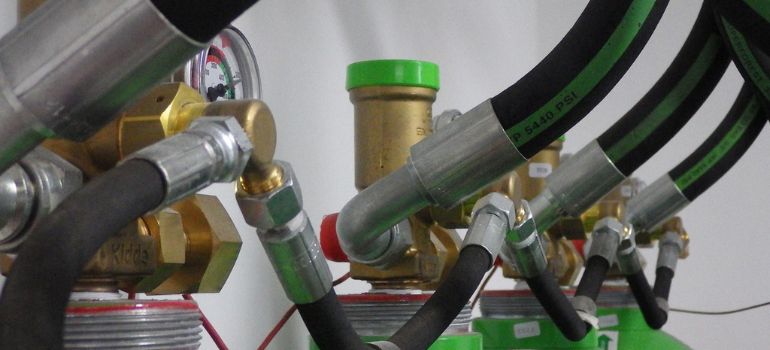Introduction
When it comes to installing or uninstalling a gas dryer, safety should always be your top priority. If you need to remove or replace your dryer and want to cap the gas line yourself, it’s essential to follow the proper procedures to ensure the safety of your home and loved ones. In this comprehensive guide, we’ll walk you through the process of capping a gas line for a dryer, step by step.
Understanding the Importance of Gas Line Safety
Before we dive into the step-by-step process, let’s emphasize the importance of safety when dealing with gas lines. Gas leaks can lead to hazardous situations, including fires and explosions. Therefore, it’s crucial to follow proper procedures and exercise caution at all times.
Gather the Necessary Tools and Materials
To cap a gas line for your dryer, you’ll need the following tools and materials:
- Adjustable wrench
- Pipe cap (appropriate size)
- Pipe thread sealant
- Gas leak detection solution
- Safety goggles
- Gloves
- Ventilation mask
step by step guide
Step 1: Prioritize Safety
Safety is paramount when working with gas lines. Before you begin, ensure you have the necessary safety equipment, including safety goggles, gloves, and a ventilation mask. Additionally, have a gas leak detection solution on hand.
Step 2: Gather Tools and Materials
Collect the following tools and materials:
- Adjustable wrench
- Pipe cap (matching the gas line size)
- Pipe thread sealant
- Gas leak detection solution
- Safety goggles
- Gloves
- Ventilation mask
Step 3: Turn Off Gas Supply
Locate the main gas shut-off valve in your home and turn it off. This step ensures that no gas is flowing through the line while you work.
Step 4: Disconnect the Dryer
Unplug the dryer from the electrical outlet and carefully disconnect it from the gas line. You may need to remove screws or clips securing the gas line to the dryer.
Step 5: Find the Gas Shut-Off Valve
Locate the gas shut-off valve on the gas line. This valve typically resembles a lever or knob. Turn it to the “off” position to shut off the gas supply to the dryer.
Step 6: Prepare the Gas Line
Using an adjustable wrench, loosen and remove the gas line from the shut-off valve. Ensure the gas line is fully disconnected from the valve.
Step 7: Choose the Right Cap
Select a pipe cap that matches the size of the gas line. Pipe caps are available at hardware stores and are designed to securely seal the gas line.
Step 8: Secure the Cap
Apply pipe thread sealant to the threads of the gas line, then screw the cap onto the gas line. Use an adjustable wrench to tighten the cap securely.
Step 9: Test for Gas Leaks

Apply gas leak detection solution to the cap and connections. If you see bubbles forming, it indicates a gas leak. In such cases, turn off the gas supply immediately and recheck the connections.
Step 10: Reconnect the Dryer
Once you are certain there are no gas leaks, reconnect the dryer to the gas line following the manufacturer’s instructions. Secure it using screws or clips.
Step 11: Turn On Gas Supply
Carefully turn on the gas supply at the shut-off valve. Pay close attention for any unusual odors or sounds. If you detect anything unusual, turn off the gas supply immediately and inspect the connections again.
Step 12: Check for Proper Functionality
Test your dryer to ensure it functions correctly. Make sure it ignites and produces heat as expected. If any issues arise, consult the dryer’s user manual or seek professional assistance.
Step 13: Dispose of Old Components
Dispose of the old gas line components following local regulations. Do not leave them lying around, as they can pose a safety hazard.
Step 14: Maintain Safety
Keep the area well-ventilated and free from flammable materials. Consider installing a carbon monoxide detector for added safety.
Step 15: Seek Professional Help
If you are unsure or uncomfortable with any step, or if the gas line installation is complex, consult a licensed professional. They have the expertise to ensure a safe and secure installation.
Safety Precautions to Keep in Mind
- Always wear safety goggles, gloves, and a ventilation mask when working with gas lines.
- Use a gas leak detection solution to check for leaks.
- If you’re unsure about any step of the process, consult a professional gas technician.
- Ensure proper ventilation in the area where you’re working.
Additional Tips for Gas Line Safety
- Regular Maintenance: It’s essential to have your gas lines inspected regularly by a professional. They can identify potential issues before they become safety hazards.
- Emergency Procedures: In case of a gas leak or suspected leak, it’s crucial to know the emergency procedures. Evacuate the area, do not use any electronic devices, and call your local gas utility company or emergency services immediately.
- Keep Flammable Items Away: Ensure that there are no flammable materials or items near the gas line or dryer. This includes chemicals, paper, or any other easily combustible substances.
- Proper Ventilation: Adequate ventilation in the laundry area is vital to disperse any gas leaks or fumes. Consider installing a carbon monoxide detector to further enhance safety.
- Professional Assistance: If you ever feel uncertain about working with gas lines or if the gas line installation is complex, it’s best to hire a licensed professional. They have the expertise and tools to ensure a safe and secure installation.
Conclusion: Safely Capping a Gas Line for Your Dryer
Capping a gas line for your dryer is a task that requires careful attention to safety and detail. By following the steps outlined in this guide and taking the necessary precautions, you can safely and confidently complete the process. Remember that safety should always be your priority when working with gas lines.
FAQs
If you have experience and are comfortable working with gas lines, you can cap a gas line for your dryer. However, if you’re unsure or inexperienced, it’s best to consult a professional.
If you detect a gas leak, immediately turn off the gas supply, ventilate the area, and consult a professional gas technician.
Depending on your local regulations, you may need permits for certain gas-related work. Check with your local authorities before starting the project.
It’s not recommended to reuse old gas line components, as they may have wear and tear. It’s safer to use new components when capping a gas line.
Yes, using a gas leak detection solution is crucial to identify any potential leaks in the connections. It’s a safety precaution that should not be skipped.



